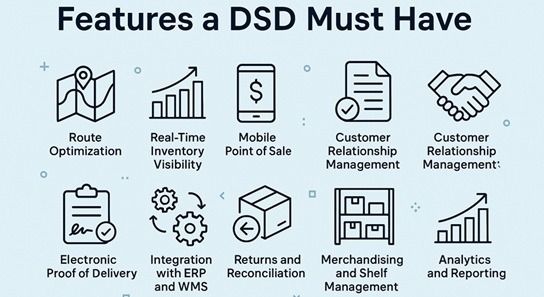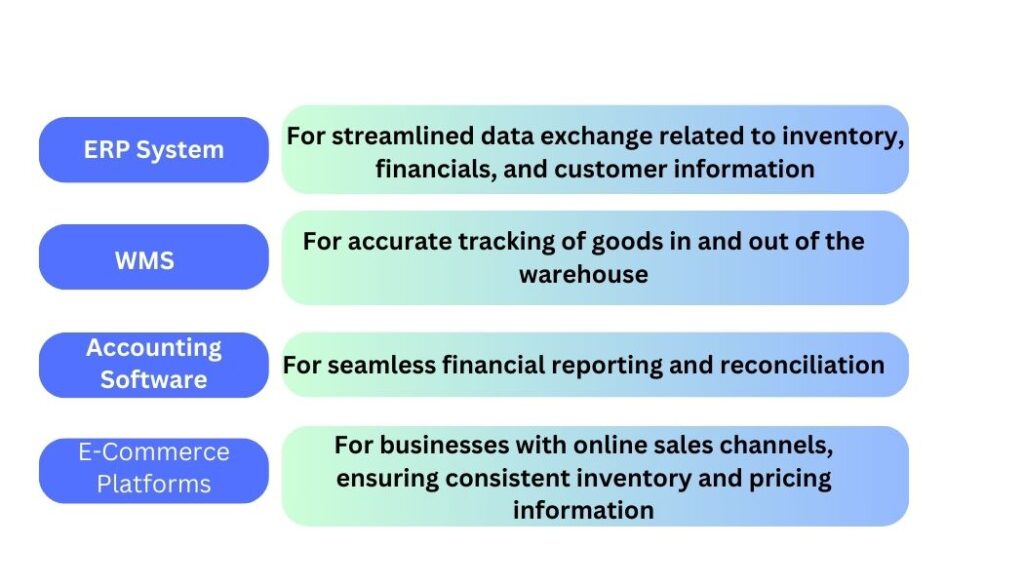
10 Essential DSD Features Necessary in Modern Distribution Operations
In today’s competitive retail environment, Direct Store Delivery (DSD) solutions are more than just tools for getting products from warehouse to shelf. They are critical systems that drive efficiency, visibility, and customer satisfaction. To stay competitive, distributors must adopt DSD platforms that go beyond basic delivery tracking and offer robust, end-to-end capabilities. This article is an update of an older article, highlighting the key DSD features every modern DSD solution must have.
1. Mobile-First Functionality for Field Teams:
The heart of DSD lies in the hands of your drivers and field representatives. Therefore, a user-friendly and feature-rich mobile application is paramount. This app should enable:
Optimized Route Planning and Navigation: Dynamic route optimization based on factors like traffic, delivery windows, and order priority is crucial for maximizing efficiency and minimizing travel time. Integrated GPS navigation ensures drivers reach their destinations quickly and accurately.
Real-time Order Management: The ability to view, create, and modify orders directly in the field, including adding new items, adjusting quantities, and applying promotions, eliminates paperwork and reduces errors.
Proof of Delivery (POD): Capturing electronic signatures, photos of delivered goods, and timestamps provides irrefutable proof of delivery, resolving disputes quickly and efficiently.
Inventory Management: Real-time visibility into truck inventory, including stock levels, expiration dates, and lot tracking, empowers drivers to manage their stock effectively and prevent stockouts.
Invoicing and Payment Processing: Generating and printing invoices on the spot, along with the ability to accept various payment methods (cash, card, mobile payments), accelerates the payment cycle and improves cash flow.
Communication and Collaboration: Seamless communication channels between field teams and back-office staff, including instant messaging and access to relevant product and customer information, fosters better coordination and problem-solving.
Offline Capabilities: Reliable offline functionality is critical for areas with poor or no internet connectivity, ensuring that drivers can continue their work without interruption.
DSD Features # 2: Robust Back-Office Management:
The mobile application is only one side of the coin. A powerful back-office system is essential for managing and analyzing the data collected in the field. Key features include:
Centralized Data Management: A single, unified platform for managing customer information, product catalogs, pricing, promotions, routes, inventory, and sales data provides a comprehensive overview of the entire DSD operation.
Route Management and Optimization Tools: Allowing administrators to create, modify, and optimize routes based on historical data, customer preferences, and delivery schedules.
Inventory Control and Forecasting: Providing real-time inventory visibility across warehouses and trucks, enabling accurate forecasting, minimizing waste, and preventing stockouts.
Order Processing and Fulfillment: Efficiently process orders from the field or directly from customers to ensure timely and accurate fulfillment.
Pricing and Promotion Management: Easily manage complex pricing structures, discounts, and promotions, ensuring consistent application across all channels.
Customer Relationship Management (CRM): Tracking customer interactions, purchase history, and preferences to personalize service and build stronger relationships.
Reporting and Analytics Provide comprehensive reporting capabilities that provide valuable insights into sales performance, route efficiency, inventory levels, customer behavior, and overall business performance.
DSD Features # 3. Seamless Integration Capabilities:
As explained in the article WMS-TMS-DSD Integration. A DSD system doesn’t operate in isolation. It needs to seamlessly integrate with other critical business systems, such as:

DSD Features # 4. Real-time Visibility and Communication:
Modern DSD demands real-time insights into field operations. Features that facilitate this include:
Live Tracking of Field Teams: Providing a real-time view of driver locations and progress on their routes.
Automated Alerts and Notifications: Triggering alerts for events like late deliveries, low stock, or order discrepancies.
Two-Way Communication: Enabling seamless communication between field teams and back-office staff for quick issue resolution and information sharing.
Conclusion
Choosing the right DSD system is a critical decision. Laceup integrated DSD system with these essential features will empower your organization to:
- Improve operational efficiency and reduce costs.
- Enhance customer satisfaction through timely and accurate deliveries.
- Gain real-time visibility into your distribution network.
- Make data-driven decisions to optimize performance.
- Increase sales and profitability.
If you want to learn more contact us for a demo or free trial.
I hope this article on the essential DSD Features has been helpful to you. I will continue to post information related to management, distribution practices and trends, and the economy in general. Our channel has a lot of relevant information. Check out this video about the Trends of WMSs in 2025.


Sorry, the comment form is closed at this time.